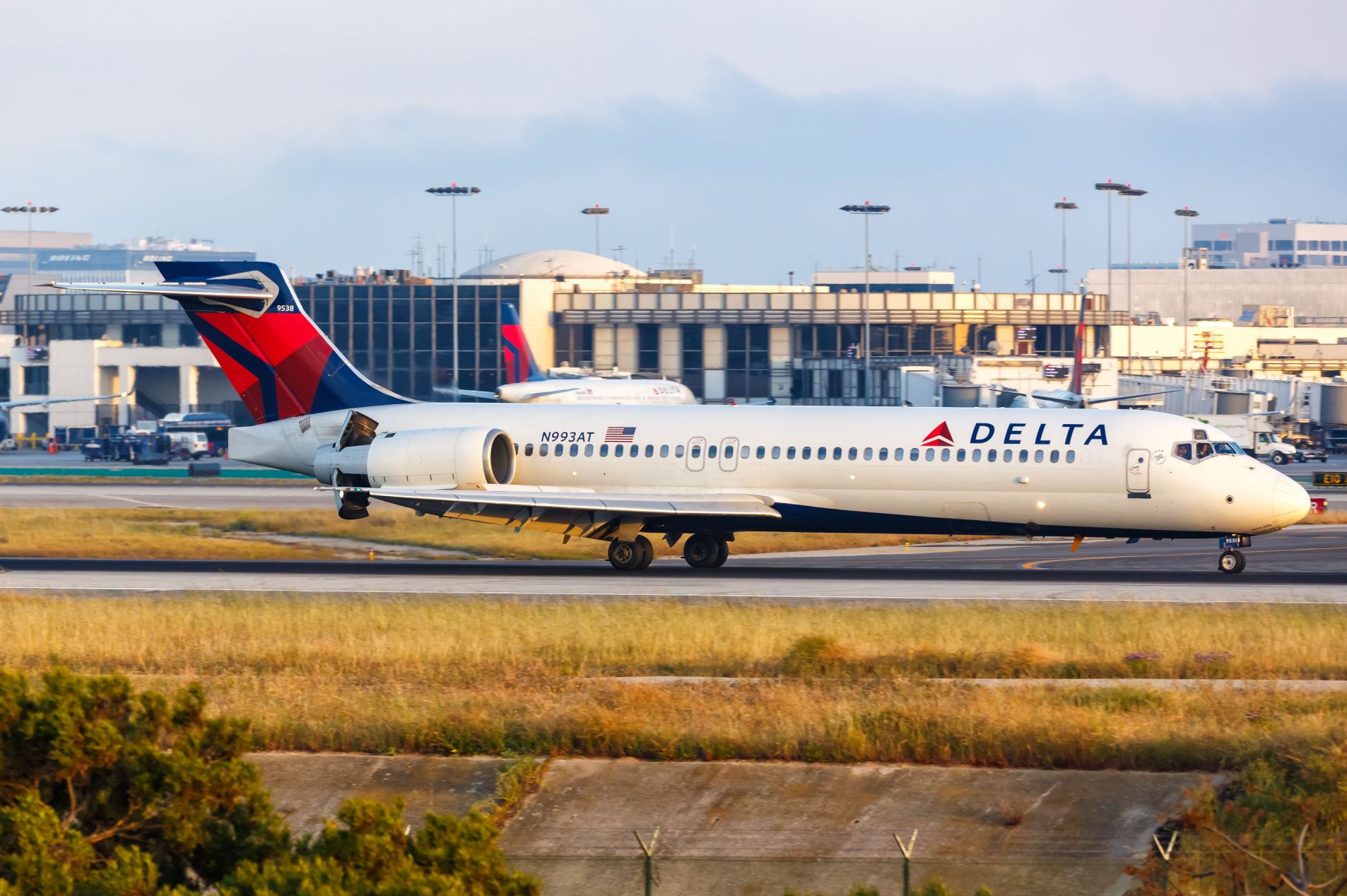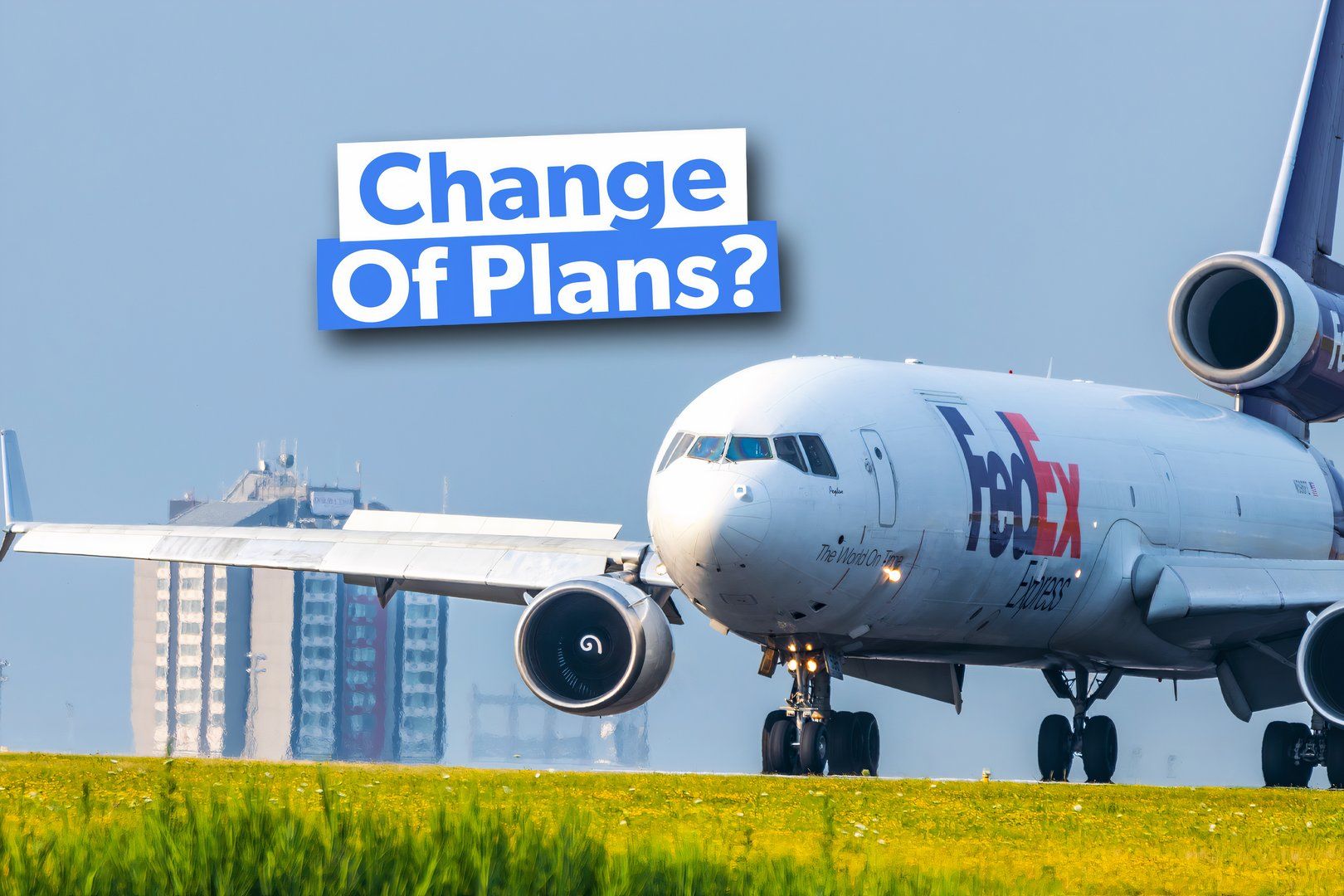When we think of McDonnell Douglas
, we often picture robust airliners almost entirely lost to time today. But many of these historic aircraft come from before the Jet Age, when McDonnell Douglas was not a thing. Before, there was simply Douglas Aircraft Company, the more famous of the two, and McDonnell Aircraft Corporation, which primarily produced military aircraft. These two companies merged in 1967 to form McDonnell Douglas.
This company produced some truly incredible military aircraft, like the C-17 Globemaster
and the F-15
. When it came to commercial aircraft, however, McDonnell Douglas began to falter. It struggled to compete against Boeing, and Airbus gradually took its place as Boeing’s primary competitor. Before McDonnell Douglas went away in 1997, it produced airliners that were once the picture of commercial flying: these are the seven airliners that it produced during its run.
1
McDonnell Douglas DC-8
556 Built from 1958 to 1972 (1958 to 1967 under Douglas)
This is one of two airliners that McDonnell Douglas produced but did not design , with the other being the DC-9. Along with the Boeing 707, this plane is credited with having catalyzed the Jet Age, as these two aircraft were larger, more capable, and more efficient than previous jet designs. Although it never proved to be as popular as the Boeing, the DC-8’s design permitted it to be stretched into the ‘Super Sixties’ series, which would go on to make up almost half of all DC-8s produced.
The plane was primarily designed and built under Douglas’ leadership. Although the new combined company produced the aircraft for five years, it wouldn’t really touch the jet until the 1970s. Increasingly severe noise restrictions threatened to ban first-generation airliners from major airports, and the large, excessively loud Super Sixty DC-8s were at a particular risk.
|
DC-8 variant |
Engines offered |
|---|---|
|
Series 10 |
Pratt & Whitney JT3C |
|
Series 20 |
Pratt & Whitney JT4A |
|
Series 30 |
Pratt & Whitney JT4A |
|
Series 40 |
Rolls-Royce Conway |
|
Series 50 |
Pratt & Whitney JT3D |
|
Series 60 |
Pratt & Whitney JT3D |
|
Series 70 |
CFM56-2 |
After much hesitation, McDonnell Douglas collaborated wit General Electric
to retrofit Series 60 aircraft with the then-new CFM56-2 engine. The ‘Super Seventies’ turned out to be a major success, as, while payload went down due to the CFM56’s higher weight, the Series 70 had significantly better fuel burn, which extended range and improved operating economics. Of course, the DC-8 Series 70s were also far quieter. 110 out of 262 DC-8 Series 60s were converted from 1982 to 1988.
2
McDonnell Douglas DC-9
976 built from 1965 to 1982
The DC-9 was the other commercial aircraft that was started by Douglas and later built by McDonnell Douglas. The DC-9 program was initially a burden for Douglas, as the company struggled to lower production costs. Douglas fell into financial hardship as it lacked cash flow, making it an attractive merger partner for McDonnell. Although the DC-9 entered service in December 1965, the majority of production was conducted under the merged McDonnell Douglas.
Although these have become rarer today than even the Douglas DC-3, the DC-9 was a remarkable airliner. Unlike Boeing’s 727 and 737, which had significant parts commonality with one another and the 707, the DC-9 was a fully unique design from the DC-8. Not only was every part of the DC-9 brand new, but development also occurred at a blistering pace. The DC-9 was officially launched in 1963 and entered service just two years later, beating the Boeing 737 to the market by 16 months.
Douglas got the DC-9 out before the two companies merged in 1967, although McDonnell Douglas did more than simply oversee its production. Perhaps most notably, the final DC-9 model, the Series 50, was launched in the 1970s under McDonnell Douglas. This was the largest of the original DC-9 models made, and also featured several aerodynamic, engine, and interior improvements.

Related
Analysis: 5 Similarities Between The Boeing 717 & The McDonnell Douglas DC-9
Both aircraft are comparable in terms of basic structural and performance characteristics.
3
McDonnell Douglas DC-10
386 built from 1969 to 1989 (plus 60 KC-10s)
The DC-10 was the first commercial aircraft that was fully developed under the leadership of the new McDonnell Douglas Corporation. Unfortunately, however, this was also where the cracks started to show. The DC-10 was born out of a need for a widebody smaller than the Boeing 747
, with superior field performance and lower fuel burn. Because Lockheed was developing the similar L1011, McDonnell Douglas pushed the DC-10 out at a breakneck speed while winning crucial orders.
However, a series of accidents early in the DC-10’s service life cast doubt on its safety. Some of these claimed lives in the hundreds, and not only did this tarnish the plane’s reputation, but it also impacted the company financially. Due to compensation, lawsuits, and costly redesigns, McDonnell Douglas never made money on the plane.
|
Prominent DC-10 Accidents |
Date |
Aircraft |
Location |
Fatalities |
|---|---|---|---|---|
|
American Airlines flight 96 |
June 12, 1972 |
N103AA (DC-10-10) |
Detroit, Michigan |
Zero (11 injuries) |
|
Turkish Airlines flight 981 |
March 3, 1974 |
TC-JAV (DC-10-10) |
Ermenonville Forest, France |
346 |
|
American Airlines flight 191 |
May 25, 1979 |
N110AA (DC-10-10) |
Chicago, Illinois |
273 |
Although the DC-10 lost money for its company, it proved to be a dependable workhorse for airlines. These planes were noted for their simple design compared to the more advanced L1011, which lowered maintenance costs and made it more reliable. Furthermore, its safety record would go on to be comparable to other second-generation airliners. However, its biggest challenge is that the market couldn’t support two widebody trijets, ensuring that neither would become truly successful.
4
McDonnell Douglas MD-80
1,191 built from 1979 to 1999
The McDonnell Douglas MD-80
was a refresh of the DC-9, and it enjoyed even more commercial success. McDonnell Douglas was troubled by DC-10 problems in the late ’70s and early ’80s, so the MD-80 and its huge sales numbers were desperately needed. It was larger than the 737-400, yet the later variants flew further than the 737-300, and it entered service four years before the 737 Classic.
The MD-80 was a competent player in the single-aisle market, but it ultimately used derivatives of the Pratt & Whitney JT8D, a 1960s-era low-bypass turbofan. The 737 Classic used the CFM56, a more modern high-bypass turbofan, while the Airbus A320 used the CFM56 and the IAE V2500. The MD-80 simply consumed more fuel, and as the A320 became more accepted, the MD-80’s days were numbered.
The MD-80 is no longer widely used, but these were once commonplace throughout the world, especially throughout the United States. Even in the 2000s and 2010s, there were hundreds of them operating in the US, with the COVID-19 pandemic being the final nail in the coffin. Though they have largely disappeared, the MD-80 is seen by many as one of the most iconic narrowbody aircraft ever made.
5
McDonnell Douglas MD-11
200 built from 1988 to 2000
Although the MD-80 was a success for McDonnell Douglas, it wasn’t enough to save the company. Orders for the DC-10 dried up, and McDonnell Douglas needed a new widebody to stay relevant. With no money to develop a brand new plane, it gave the DC-10 a thorough update in the form of the MD-11.
The MD-11 was competing against the Airbus A330, A340, and the Boeing 777. It was first to the market and held significant promise, but the main issue with the MD-11 is that it failed to meet fuel burn and payload-range expectations. Refreshing a 1970s-era airliner to compete against three brand-new designs was always going to be a tall order, and the MD-11 wasn’t up to it.
|
Type |
Entry-into-service (EIS) |
Total produced |
Variants |
|---|---|---|---|
|
Airbus A330 |
1994 |
1,629 |
A330-800, A330-900neo, A330 MRTT, A330-200, A330-300, A330-200F |
|
Airbus A340 |
1993 |
380 (Out of production) |
A340-200, A340-300, A340-500, A340-600 |
|
Boeing 777 |
1995 |
1,752 |
777-8, 777-9, 777-8F, 777-200, 777-200ER, 777-300, 777-200LR, 777-300ER, 777F |
|
McDonnell Douglas MD-11 |
1990 |
200 (Out of production) |
MD-11, MD-11C, MD-11CF, MD-11ER, MD-11F |
Where the MD-11 did become an aviation icon, however, was in the cargo world. Unlike the A330F or the Boeing 777F that debuted in the 2000s, McDonnell Douglas offered the MD-11F from day one. It proved popular among cargo airlines, and these companies then converted cheap passenger models as they were quickly retired. All in all, the MD-11 was shunned by the passenger world and adored in the freight world.

Related
Why FedEx Actually Won’t Be Retiring Its McDonnell Douglas MD-11s Anytime Soon
What does the future of FedEx’s MD-11 look like?
6
McDonnell Douglas MD-90
116 built from 1993 to 2000
The MD-90 ended up being more notable as a ‘what-if’ platform than as an airliner. McDonnell Douglas initially envisioned the third-generation DC-9 to offer propfans, though the technology was dropped due to a lack of airline interest. The company also envisioned a wide range of fuselage lengths, and it also formed the basis for the Boeing X-66 experimental aircraft.
As standard, however, the MD-90 came in just one size, and it features minimal changes compared to the MD-80. Most notably, it was longer than the MD-80 and used new IAE-V2500 engines, but these changes were insufficient when going up against the clean-sheet A320 and the thoroughly redesigned 737NG.
|
Aircraft |
EIS |
Variants |
Engines |
Total produced |
|---|---|---|---|---|
|
Airbus A320 |
1988 |
A318, A319, A320, A321 |
CFM56-5, IAE V2500 |
8,106 |
|
Boeing 737NG |
1997 |
737-600, 737-700, 737-800, 737-900, 737-900ER |
CFM56-7 |
7,126 |
|
McDonnell Douglas MD-90 |
1995 |
MD-90-30 |
IAE V2500 |
116 |
Several operators picked up small numbers of MD-90s, but ![]() Delta Air Lines
Delta Air Lines
ended up purchasing a significant portion of these planes. This was in addition to examples that it received fresh from the factory. They were cheap to purchase, so Delta used these obscure versions of the ‘Mad Dog’ for decades until the COVID-19 pandemic ended commercial MD-90 operations worldwide.
7
McDonnell Douglas MD-95 / Boeing 717
156 built from 1998 to 2006
The MD-95/717 was the last airliner that McDonnell Douglas ever created. As the DC-9 series became larger, McDonnell Douglas recognized the need for a smaller, lighter variant similar to the DC-9-30. Market conditions created the MD-87, a simple shrink of the MD-80, but McDonnell Douglas was finally able to develop a smaller, lighter, and more efficient DC-9 variant in the form of the MD-95.
ValuJet was the first customer, ordering 50 examples with options for 50 more. However, McDonnell Douglas merged with Boeing during the MD-95’s development, and the new entity elected to continue the MD-95’s development. It was rebranded as the Boeing 717
, a title previously used internally to refer to the C-135 and KC-135.
This aircraft was far from a sales success. For its buyers, however, it was a reliable and cost-effective machine, finding love with Delta in particular. For Hawaiian Airlines, meanwhile, this is the only modern jet in the world that can reliably perform interisland routes. Flights can be as short as 20 minutes, and these planes perform a dozen or more flights a day. No airliner currently in production can do this every day without fail.











